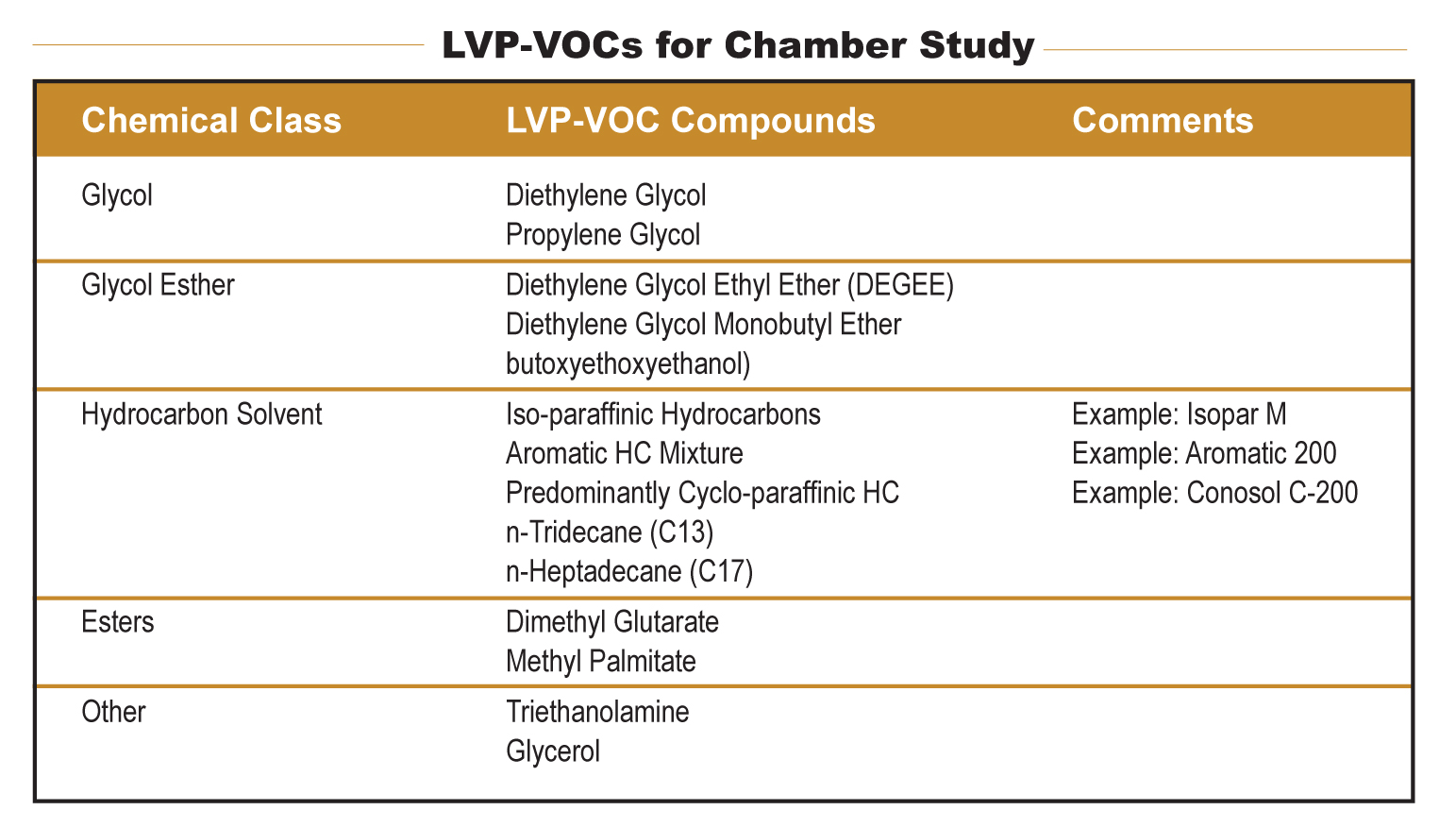Written on: January 7, 2014 by Doug Raymond
CARB
The California Air Resources Board (CARB) continues to work on finalizing the amendments to the Consumer Products and Aerosol Coating regulation. The fifteen-day notice should be released around the first of the year. After comments are made and CARB staff finalizes the rule, the next step is to send the rule to the Office of Administrative Law (OAL) for review. OAL has thirty days to comment then submit the rule for finalization. If everything goes well, this will all be done by the end of the first quarter.
LVP Research
In addition to this work, the research division is working on the low vapor pressure-volatile organic compound (LVP-VOC) study. The final list for testing has been set. Below are the compounds that will be in the LVP-VOC study.
Next, CARB research will review formulations of products with each of these compounds in them. CARB will also review different categories of products for different use patterns. For example, some products are used where a majority of the product is not emitted into the atmosphere. One example is products that are routinely washed down the drain, such as cleaners. The VOCs from these products are likely not emitted as a result of being in contact with water and processed through a sanitation plant. The next call with the CARB research division will be in early January.
If your company relies on LVP-VOC for your formulations, you need to pay specific attention to CARB’s LVP-VOC study; the outcome could have a significant effect on your product.
Product Dating/Date coding
Date code information needs to be reported to CARB every year by your company if you do not use CARB’s standard date coding. California Section 94512 (b) product dating specifically requires all consumer products to be sold into the state to display the day, month and year the products was manufactured or a code indicating the date. CARB has been increasing their activity on investigating and levying fines for non-compliance of this section.
The date or date-code information shall be located on the container or inside the cover/cap so that it is readily observable or obtainable (by simply removing the cap/cover) without irreversibly disassembling any part of the container or packaging. Information may be displayed on the bottom of a container as long as it is clearly legible without removing any product packaging.
CARB’s standard code that has to be represented separately from other codes on the product container so that it is easily recognizable is the following: YY DDD = Year Year Day Day Day. A manufacturer who uses this standard CARB code to indicate the date of manufacture does not have to report this code.
Failure to register a date code is subject to a fine, which seem to go up every year. Your date code explanation needs to be submitted to Enforcement on an annual basis, on or before Jan. 31 of each year.
OTC
Ozone Transport Commission (OTC) held a meeting on Nov. 14 in Washington, DC, where it voted on a resolution to submit to the U.S. Environmental Protection Agency (EPA). This resolution requests that the EPA adopt the newest Consumer Products Model Rule approved by OTC, as the National Regulation on Consumer Products. This new model rule is significantly more stringent than the current EPA National Rule on Consumer Products. Remember, the EPA National Consumer Products rule was adopted in 1998. Since that time, CARB has had numerous rulemakings and has added many more categories and lowered VOC limits on the existing categories. The OTC model rule does not have all the stringent limits of the CARB rule, but the OTC rule was modeled after an earlier version of the CARB rule.
The issue is that there are parts of the U.S., such as the southeast and numerous states out west, that only have the EPA National Consumer Products Regulation to deal with. By updating the rule to the OTC Model Consumer Products rule, some regional manufacturers or national manufactures that have regional products will be subject to significantly lower VOC limits. The question is whether these states and our consumers need these stringent VOC limits.
At the meeting, the EPA presented an update of its activities and this issue was not on its list. We will need to wait and see if EPA has the manpower to work on updating their regulation. If they decide to work on this rule, we as the Industry, need to ensure enough time is given to comply with the new limits. Spray